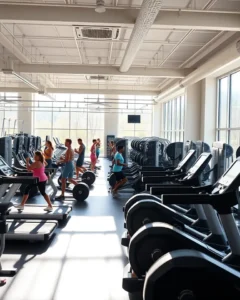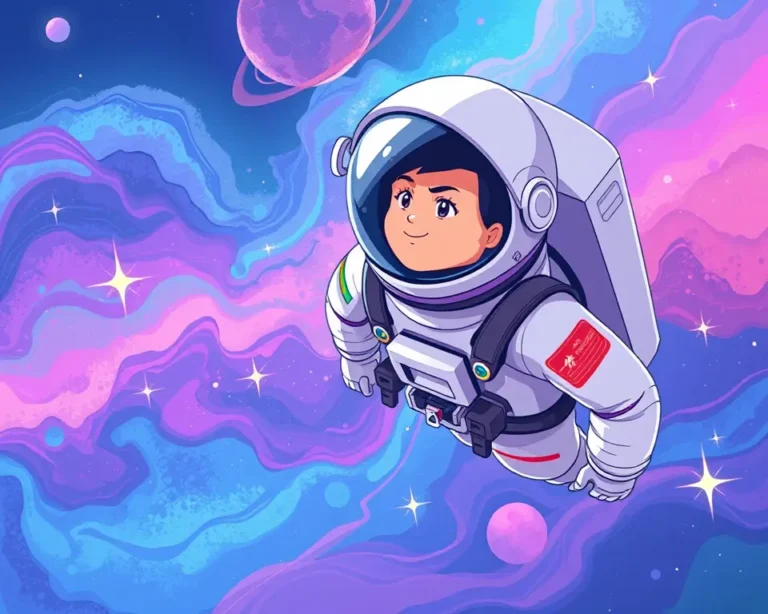Astronaut Kellie Gerardi is gearing up for another space mission, and she’s revealed her unique approach to preparing for the journey, including how she’s “upping her dose of Vitamin G.” As a bioastronautics researcher and mother, Gerardi balances the demands of family life with her ambitious career, inspiring many with her journey.
Kellie Gerardi: An Astronaut Balancing Family, Research, and Space Exploration
Kellie Gerardi is not your typical astronaut. She juggles her career as an aerospace and technology professional with her roles as a mother and science communicator. Gerardi gained widespread recognition for her spaceflight as a payload specialist on the Galactic 05 research mission with Virgin Galactic. She is also an author of children’s picture book series, Luna Muna. With a significant presence on social media platforms like TikTok and Instagram, she shares her experiences, making space exploration relatable to a broad audience.
Gerardi’s work with the International Institute for Astronautical Sciences (IIAS) involves conducting healthcare and thermodynamic fluid experiments in space. She also leads Mission Operations for Palantir Technologies and is involved with organizations like the Truman National Security Project and The Explorers Club.
“Upping Her Dose of Vitamin G”: Preparing for Spaceflight
Gerardi humorously describes her training regimen as “upping my dose of Vitamin G,” referring to the high G-forces experienced during aerobatic and parabolic flights. This training is crucial for choreographing movements in the spacecraft cabin and ensuring experiments function as intended. These flights simulate the microgravity environment of space, allowing Gerardi and her team to test technology and refine procedures.
- High-G and Zero-G Forces: Gerardi undergoes rigorous training involving high-G and zero-G forces to prepare for the physical demands of spaceflight.
- Parabolic Flights: These flights, often called the “Vomit Comet,” simulate microgravity by flying in a parabolic arc, providing brief periods of weightlessness.
- Choreographed Movements: Astronauts carefully plan their movements in the spacecraft cabin, practicing and perfecting them to ensure efficiency and safety.
Hydration in Space: A Critical Factor
Staying hydrated is a top priority for astronauts, especially concerning G tolerance. Gerardi emphasizes the importance of hydration in the weeks leading up to her spaceflight. Measures are taken to ensure astronauts have easy access to water and don’t have to worry about restroom breaks during critical mission phases.
- Electrolyte Mixes: Gerardi uses electrolyte mixes and hydration tablets to maintain optimal hydration levels.
- Maximum Absorbency Garments: Also known as diapers, these garments ensure astronauts can focus on their tasks without being preoccupied with needing to use the restroom.
The Future: More Spaceflights and Leading an All-Female Research Team
Kellie Gerardi is preparing for another space mission in 2026, where she will lead an all-female research team. This mission aims to advance research in microgravity, which has significant implications for space technology and potential benefits for life on Earth.
Addressing Challenges for Women in STEM
Gerardi is vocal about the challenges women face in STEM fields, advocating for greater representation and opportunities. Her journey inspires young women to challenge gender roles and pursue careers in science and technology.
Balancing Career and Family Life
Gerardi is open about balancing her demanding career with her personal life. She has a daughter, Delta V, and has shared her experiences with IVF as she plans for both motherhood and space travel.
SunChips Partnership and Solar Eclipse
Gerardi partnered with SunChips to promote their limited-edition Pineapple Habanero and Black Bean Spicy Gouda flavor, launched during the total solar eclipse. This collaboration highlights her role as a science communicator and her ability to connect with a broader audience.
Gerardi’s Perspective
Kellie Gerardi views space as “humanity’s shared past and shared future,” emphasizing the importance of using space as a laboratory to benefit humanity. She believes that access, not aptitude, has been the limiting factor in human spaceflight, and she is committed to enabling the next generation of scientists and civilians to explore space.







